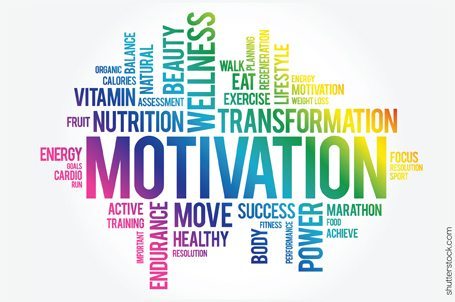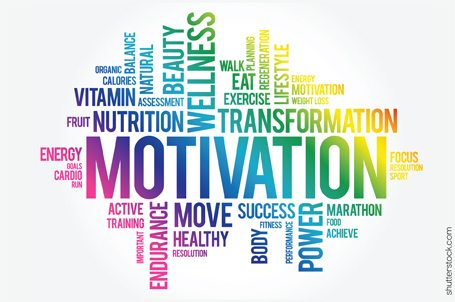
A patient who used to treat her ailments with over-the-counter (OTC) and home remedies, and took pride in the number of years it had been since she saw her doctor, now researches her condition early and visits her doctor for preventive care. A middle-aged man who has always been aware of the health benefits of exercise, but never got around to it, has excitedly stuck to his exercise regimen for the past two years.
These are just two examples of people nudged into new behavioral pathways by deliberate programs built on insights from behavioral data and advanced analytics. These individuals have been indirectly “studied,” “understood,” and delivered the right information, through preferred platforms, at the right time, within the right context. Such examples are now showing up at an accelerated rate. Everywhere.
The benefits of positive health behavior changes are not controversial, so why are they still so difficult for health change agents to achieve? This difficulty is not unique to healthcare. Whether it is changing behavior on energy conservation, organ donation, recycling, driving habits, or responsible mobile phone usage, humans are difficult to change. But such change hurdles are diminishing as data is now used to change what we believe, how we choose, and how we behave.
Before we dive in, we want to emphasize the collaborative role of analytics and planning. Although analytics is usually discussed in terms of facts, empiricism, data, mathematics, and models—and not in emotional, human, or psychological terms—both disciplines must collaborate for effective health behavioral change.
Emerging Capabilities of Behavioral Data Analytics
Between the daily fire-hose of data droplets we generate, and the sophisticated analytics capabilities of artificial intelligence (AI) that can comb through massive datasets, we have opened a window of opportunity that helps people form new habits faster and more easily. We can now combine data from disparate sources like computers, mobile phones, cars, government records, home gadgets, and health devices to understand individual decision maps and influence points.
Even more impressive is the possibility of building detailed behavioral profiles for individuals by relying less on research and survey responses—which tend to have low participation rates and response bias—but on empirical datasets that exist more readily for most people. The examples below are by no means complete, but give an idea of what data exists today and what can be inferred from the data.
- Demographic details such as age, gender, income, education, occupation, and specialty that give a good background of who you are as an individual.
- Location data, including home, work, current and recent locations, that allow marketers to understand your key domains and when and how you transition between them.
- Wellness habits such as exercise routines, cardio intensity, steps, gait, altitude, kinetic movements, and sleep patterns that provide an overall health and wellness picture.
- Health records such as doctor’s visits, medications, OTC recommendations, pharmacy visits, digital pill box engagements, medical history, even genetic datasets, that show your medical conditions, history, and compliance.
- Content consumption and engagement data such as subscriptions, social media followed, purchases, posts, comments, chats, likes, apps usage, and entertainment downloads that paint a picture of your passions and interests.
- Textual and communication content such as vocabulary, syntax, and language that illustrate deeply held beliefs, attitude, anxieties, and fears.
- Inquiry data such as searches, questions, and navigation inputs that reveal your plans and intent.
Not all datasets can be combined neatly as of today, but efforts are proceeding at a fast pace. Stringing just a few of these variables together with extensive analysis provides clear and insightful individual profiles. A deliberate behavior change plan and strategy help harness these data capabilities.
The Behavior Change Planning Process
Rather than try to make people more rational, planning for change seeks opportunities to design communications and context that can inform their mindset. Therefore, effective health behavior change requires the deliberate orchestration of information, incentives, and environmental engineering to nudge or push audiences into a new behavioral path.
The behavior change architecture process we follow to integrate these components include:
- Articulate the change objective or goal.
- Understand the different customer groups targeted for change.
- Outline current decision pathway and identify decision points—those moments of truth along the journey.
- Diagnose the forces driving current behavioral patterns and formulate interventions to overcome undesired behavior during prioritized moments of truth.
- Identify the right information, incentives, and environmental restructure that will drive new behaviors.
- Put metrics in place to evaluate and improve the effectiveness of the behavior change plan.
- Execute and optimize the change plan.
How Data and Analytics Create Behavior Change
Behavioral data and advanced analytics impact all the planning and execution steps outlined above, albeit to varying degrees. We will focus on four high-impact areas:
1. Segment on change needs: When it comes to segmentation, planners have long relied on either emotional or behavioral segmentation. Learning from big and individual datasets, combined with AI, goes well beyond traditional segmentation to categorize audiences along behavior change drivers. Some will need a nudge; some a push; others still, a smack! This understanding helps plan for aggressive intervention for some segments and subtler approaches for others.
2. Reveal “moments of truth”: Planners have always illustrated the behavior change pathways using journey maps. Now, we can create even more actionable behavioral maps, assigning decision likelihood (or drop-offs) at each point for populations, subgroups, even individuals.
3. Recommend personalized and effective change interventions: As the advancements in data and analytics enhance easier identification and personalization of content, incentives, and contextual engineering, planners and analytics leads are working together more closely to align creative briefs to deeper levels of insight. Future creative and channel solutions could include ideas like these:
- Finding the right tone of voice: You may recall the super successful “Dumb Ways to Die” metro campaign in Australia that resulted in a 21% reduction in railway accidents and near misses. Now, we can better understand, tailor, test, and optimize both content and tone by learning which emotional drivers resonate best in real time, with real people.
- Personalized and timely messages: As sensor data becomes more ubiquitous, we’ll need to understand the potential of empathetic technology. For instance, real-time updates or alerts from Internet of Things (IoT) sensors can warn or nudge an asthmatic patient toward adherence and compliance.
- Personalized incentives: We can now personalize the type and size of incentives to help balance the cognitive computation of cost versus reward. Incentives can be tangible or intangible, such as social media-based competition or badges; communicating new levels and records from individual or group performance; or raising the financial cost or inconvenience for negative behavior or noncompliance. For instance, the benefits of registering on a health website can be customized for each individual or group, and augmented with information delivered shortly afterwards using historical patterns to offer value-based services and information.
- Personalized environmental engineering: This is arguably the most effective influence of data and advanced analytics. The effect of default options on behavior change is well illustrated by such diverse examples as increased organ donations resulting from default opt-in at the DMV; lift in 401k participation from pre-enrollments, to the recent JAMA study that showed 23% increase in use of generic drugs when they are the default option in EHR systems. We can now design plans based on individual needs, and provide apps or devices that best support an individual’s current context.
4. Execute, test, and optimize the plan: The ability to execute at a highly detailed level is vital to behavior change. Serving dynamic content using business rules allows for tremendous flexibility in testing and executing channel selection, context identification, content selection, delivery method, and timing to reach highly targeted audiences. Technology and analytics systems now use the type or sequence of information audiences see to self-learn, giving them the data required to predict or infer preferences and drivers that can stimulate perceived self-choice.
These are the building blocks that changed the behavior of the actors we started with. Here’s how we know: Iyiola is that middle-aged man mentioned above, who has made time for several runs per week and even completed a few half-marathon races last year (no easy feat with four kids running around)! Iyiola describes how it happened: “It began with an introduction to the personal training and fitness app—Endomondo—in the app store, based on what others like me own, to messages around easing into races, to social media connectedness to other runners, to Amazon suggesting the Garmin Forerunner device based on my browsing habits, which now prods me for movement and keeps track and benchmarks my runs, laps, and records. Rather than the ‘30 mins exercise a day is good for health’ message, the cross-section of information, incentives, and devices has changed me.”
Balancing Excitement and Responsibility
Changing human behavior is tough, but data has significantly improved our ability to create and maintain positive behaviors. We, however, need to be cautious and upfront so as not to mix up potential with reality. Economic motivation of separate data owners may continue to limit the potential of data integration. Genuine concerns about privacy and information misuse will remain a necessary debate. The ethical concerns regarding the use of data for social engineering will necessitate continuous monitoring. Lastly, potential population bias due to data limitations should not be brushed off.
Despite these challenges and considerations, the datasets that brands (and society) have access to today can make positive differences in health outcomes. The focus should be on making the most of the available datasets, setting the right expectations for what’s possible, and ensuring assigned talents work within ethical bounds. We can better help audiences make individually and socially beneficial decisions today thanks to behavioral data analysis. We believe that it is our responsibility to make it happen.








